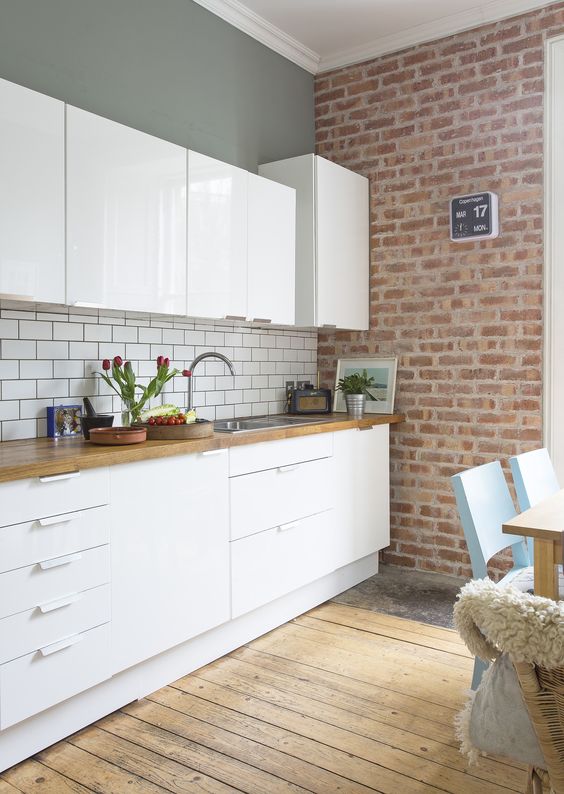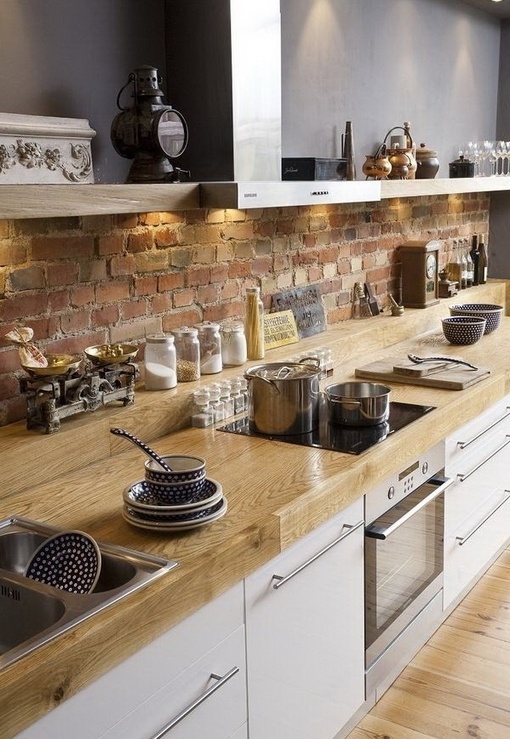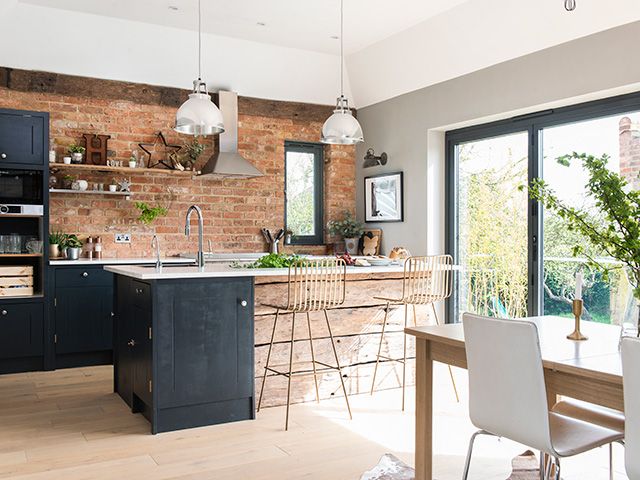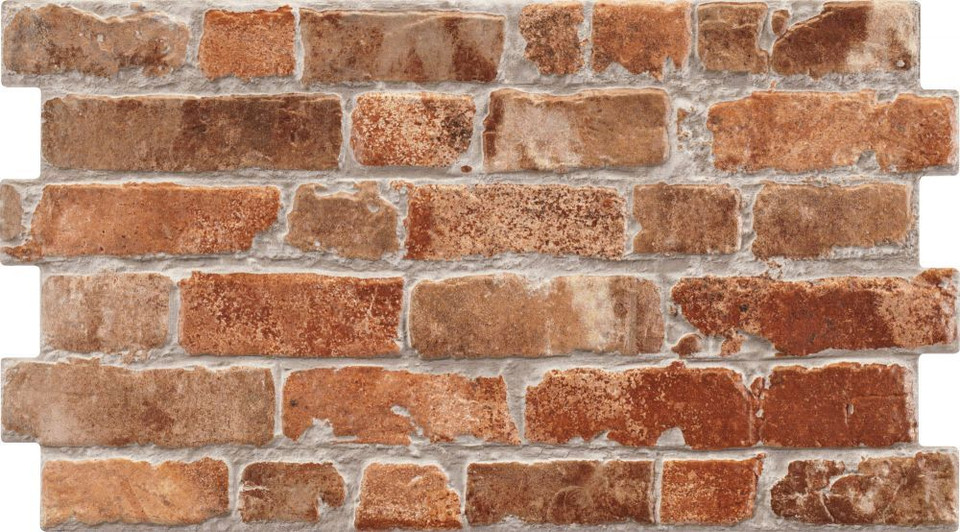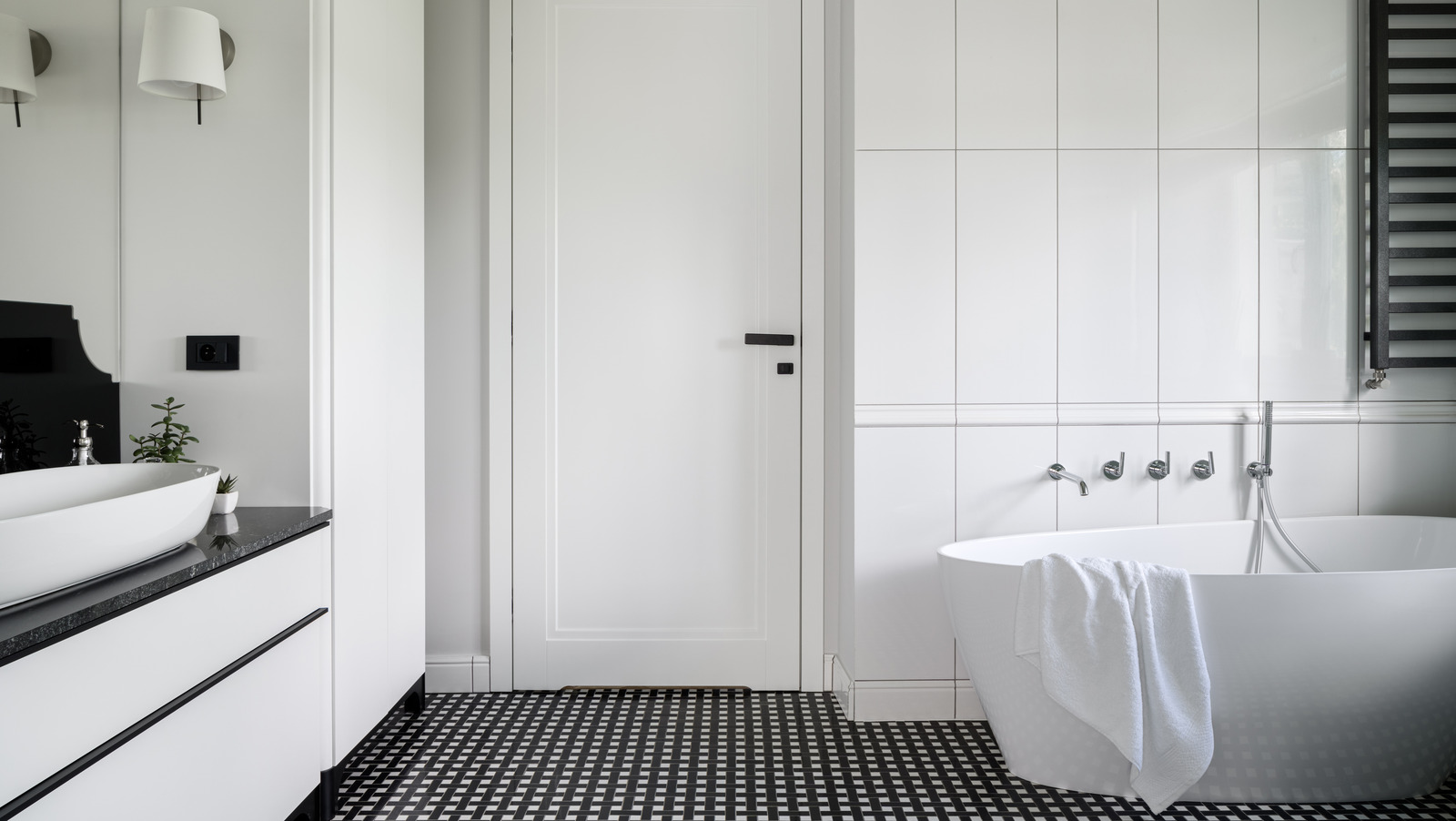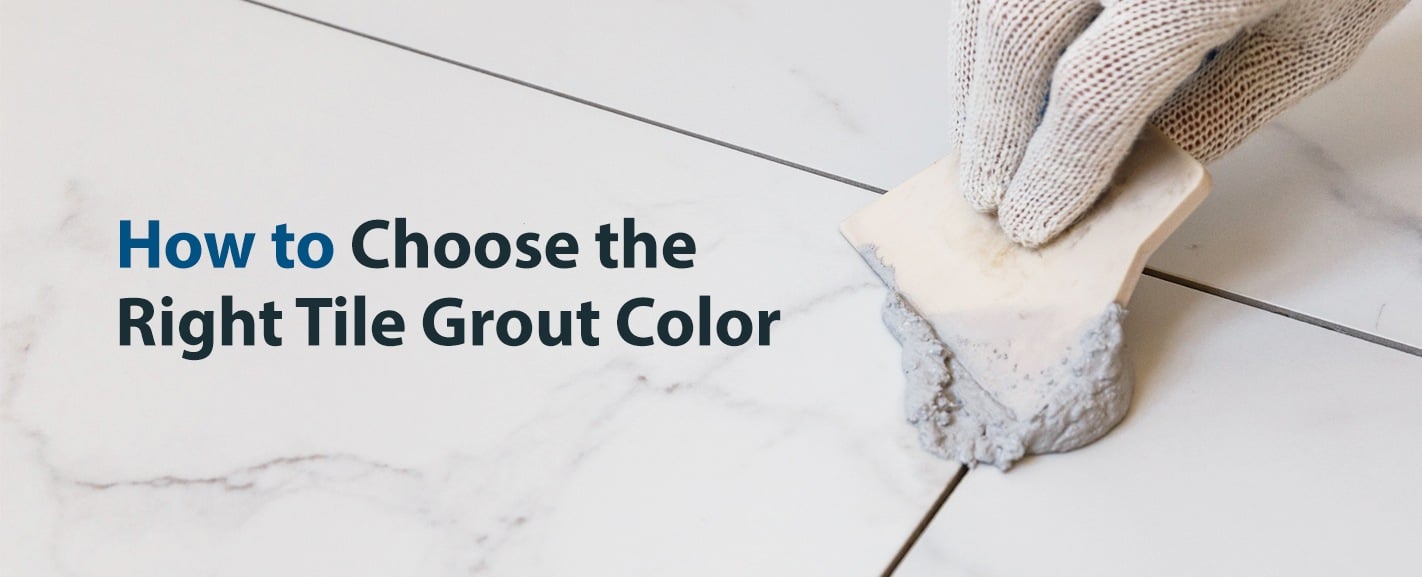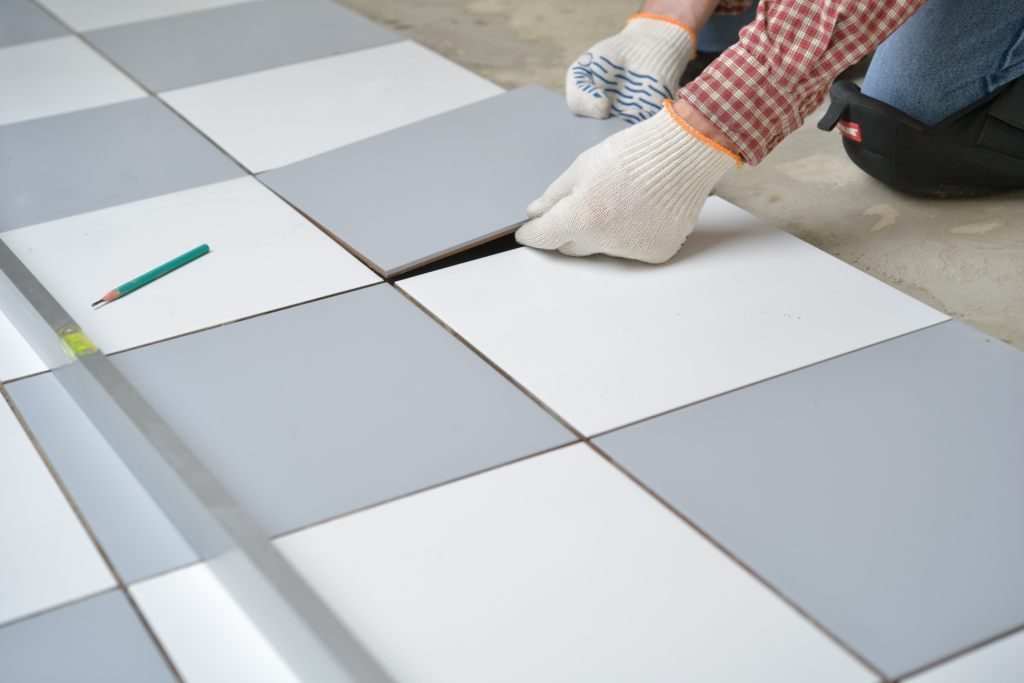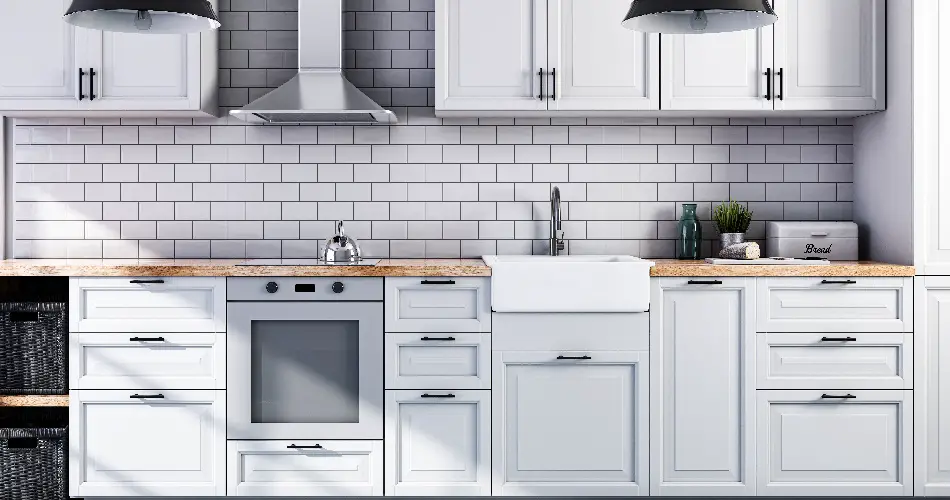Tiling a kitchen wall with a brick effect can add a unique and stylish touch to your kitchen. Whether you want to go for a modern industrial look or a rustic farmhouse vibe, a brick effect can achieve both. But how do you tile a kitchen wall with a brick effect? Here is a step-by-step guide to help you get started.How to Tile a Kitchen Wall with a Brick Effect
There are a few different ways to create a brick effect on a kitchen wall. You can use actual bricks, brick veneers, or brick effect tiles. The easiest and most cost-effective way is to use brick effect tiles, which are specifically designed to mimic the look of real bricks. They come in a variety of sizes, colors, and textures, allowing you to achieve the desired effect for your kitchen.How to Create a Brick Effect on a Kitchen Wall
Tiling a kitchen wall with a brick effect is a great DIY project that can save you money and give you a sense of accomplishment. However, it is important to note that it does require some skill and patience. If you have never tiled before, it might be best to practice on a smaller area first. Also, make sure you have all the necessary tools and materials before you begin.DIY Brick Effect Kitchen Wall
Step 1: Prepare the wall. Before you start tiling, make sure the wall is clean, dry, and free of any debris. If there are any holes or imperfections, fill them in with spackle or putty and let it dry completely. Step 2: Measure and plan. Measure the area you want to tile and plan out the pattern you want to achieve. It is recommended to start from the center of the wall and work your way outwards. Step 3: Apply adhesive. Using a trowel, spread tile adhesive onto the wall in small sections. Make sure to only apply enough adhesive for a few tiles at a time, as it can dry quickly. Step 4: Place the tiles. Carefully place the tiles onto the adhesive, using spacers to ensure even spacing between each tile. Press down firmly to secure the tiles in place. Step 5: Cut tiles if needed. Use a tile cutter or wet saw to cut tiles to fit around corners or edges. Step 6: Let it dry. Allow the tiles to dry completely before moving on to the next step. Step 7: Apply grout. Once the tiles are dry, remove the spacers and use a grout float to apply grout between the tiles. Wipe off any excess grout with a damp sponge. Step 8: Clean and seal. After the grout has dried, use a grout sealer to protect the tiles and make them easier to clean.Step-by-Step Guide to Tiling a Kitchen Wall with a Brick Effect
There are many different ways to incorporate a brick effect into your kitchen. You can create a classic red brick wall, go for a more modern white brick look, or even mix and match different brick effects for a unique design. You can also play with the orientation of the bricks, such as a herringbone or stacked pattern.Brick Effect Kitchen Wall Ideas
When choosing tiles for a brick effect kitchen wall, it is important to consider the color and texture of the tile. It should complement the overall design of your kitchen and create the desired effect. Some popular options include ceramic, porcelain, and natural stone tiles.Best Tiles for a Brick Effect Kitchen Wall
To ensure your brick effect kitchen wall looks professional, here are some helpful tips:Tips for Achieving a Professional-Looking Brick Effect on a Kitchen Wall
If you are still unsure about how to incorporate a brick effect into your kitchen, here are some ideas to inspire you:Brick Effect Kitchen Wall Inspiration
Choosing the right grout is crucial for achieving a professional-looking brick effect on your kitchen wall. The color of the grout can greatly affect the overall look of the wall. For a natural and seamless look, choose a grout color that matches the color of the tiles. If you want the bricks to stand out, choose a contrasting grout color.How to Choose the Right Grout for a Brick Effect Kitchen Wall
While tiling a kitchen wall with a brick effect may seem like a simple task, there are some common mistakes that can easily be avoided:Common Mistakes to Avoid When Tiling a Kitchen Wall with a Brick Effect
Tiling a Kitchen Wall: Achieving a Stunning Brick Effect

Why Choose a Brick Effect for Your Kitchen Wall?
 When it comes to kitchen design, the walls are often overlooked. However, the right wall treatment can make a huge impact on the overall aesthetic and ambiance of the space. One popular option for kitchen walls is the brick effect, which can add warmth, texture, and character to any kitchen design.
Brick
has been a staple in construction for centuries, and its timeless appeal has made its way into interior design. The
brick effect
can bring a rustic, industrial, or even modern look to your kitchen, depending on the style and color of the bricks. It can also complement a variety of kitchen styles, from farmhouse to urban chic.
When it comes to kitchen design, the walls are often overlooked. However, the right wall treatment can make a huge impact on the overall aesthetic and ambiance of the space. One popular option for kitchen walls is the brick effect, which can add warmth, texture, and character to any kitchen design.
Brick
has been a staple in construction for centuries, and its timeless appeal has made its way into interior design. The
brick effect
can bring a rustic, industrial, or even modern look to your kitchen, depending on the style and color of the bricks. It can also complement a variety of kitchen styles, from farmhouse to urban chic.
How to Achieve the Brick Effect on Your Kitchen Wall
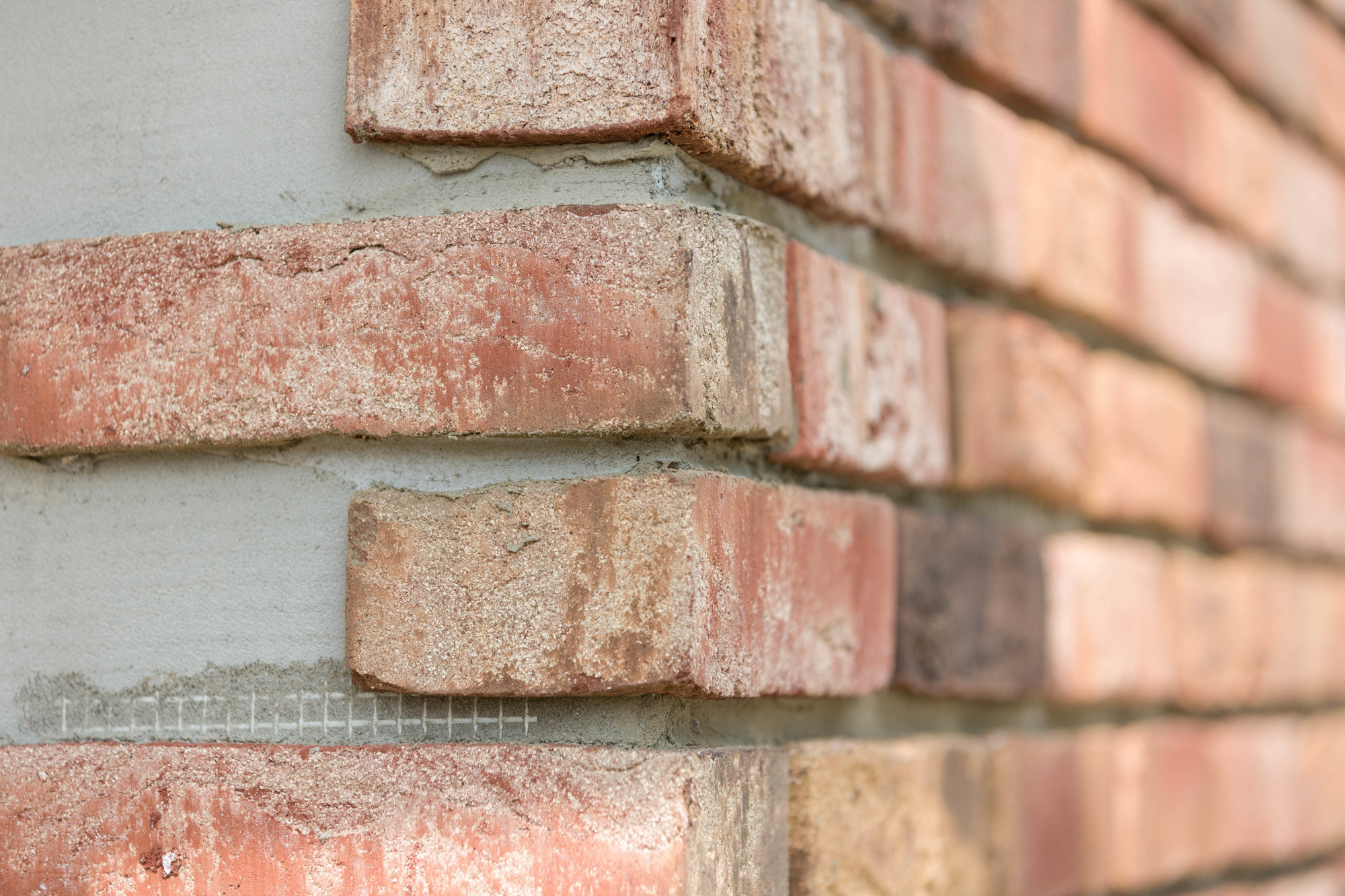 One of the easiest and most cost-effective ways to achieve a brick effect on your kitchen wall is through tiling. With
tiling
, you can create the look of a brick wall without the hassle and expense of actual brick construction. Here are the steps to
tiling a kitchen wall
with a brick effect:
Step 1: Prepare the Wall
Before starting the tiling process, make sure that the wall is clean, dry, and free from any bumps or imperfections. Fill in any holes or cracks with spackling compound and sand down any rough areas. If the wall has been previously painted, sand it down to create a rough surface for better tile adhesion.
Step 2: Choose the Right Tiles
Tiles
come in a variety of materials, sizes, shapes, and colors. For a brick effect, it's best to choose tiles that mimic the look of real bricks. You can find these in ceramic, porcelain, or even vinyl options. Choose a color that complements your kitchen's color scheme and style.
Step 3: Plan Your Layout
Measure the area of your kitchen wall and plan out the layout of your tiles. It's important to have a balanced and symmetrical design, so start from the center and work your way outwards. This will also help you determine the number of tiles you will need and where to make any cuts.
Step 4: Adhere the Tiles
Using a trowel, spread tile adhesive on the back of the tile and press it onto the wall. Make sure to use spacers between each tile to maintain even spacing. Continue to work your way across the wall, adjusting the tiles as needed to ensure a straight and level layout.
Step 5: Grout and Seal
After the adhesive has dried, remove the spacers and fill in the gaps between the tiles with grout. Wipe off any excess grout with a damp sponge and let it dry. Once the grout has set, apply a sealant to protect the tiles from stains and water damage.
One of the easiest and most cost-effective ways to achieve a brick effect on your kitchen wall is through tiling. With
tiling
, you can create the look of a brick wall without the hassle and expense of actual brick construction. Here are the steps to
tiling a kitchen wall
with a brick effect:
Step 1: Prepare the Wall
Before starting the tiling process, make sure that the wall is clean, dry, and free from any bumps or imperfections. Fill in any holes or cracks with spackling compound and sand down any rough areas. If the wall has been previously painted, sand it down to create a rough surface for better tile adhesion.
Step 2: Choose the Right Tiles
Tiles
come in a variety of materials, sizes, shapes, and colors. For a brick effect, it's best to choose tiles that mimic the look of real bricks. You can find these in ceramic, porcelain, or even vinyl options. Choose a color that complements your kitchen's color scheme and style.
Step 3: Plan Your Layout
Measure the area of your kitchen wall and plan out the layout of your tiles. It's important to have a balanced and symmetrical design, so start from the center and work your way outwards. This will also help you determine the number of tiles you will need and where to make any cuts.
Step 4: Adhere the Tiles
Using a trowel, spread tile adhesive on the back of the tile and press it onto the wall. Make sure to use spacers between each tile to maintain even spacing. Continue to work your way across the wall, adjusting the tiles as needed to ensure a straight and level layout.
Step 5: Grout and Seal
After the adhesive has dried, remove the spacers and fill in the gaps between the tiles with grout. Wipe off any excess grout with a damp sponge and let it dry. Once the grout has set, apply a sealant to protect the tiles from stains and water damage.
In Conclusion
 With the right materials and techniques, tiling a kitchen wall to achieve a brick effect can be a simple and rewarding DIY project. Not only will it add visual interest and depth to your kitchen, but it will also make for an easy-to-clean and durable wall surface. So why not give your kitchen a touch of rustic charm with a brick effect wall?
With the right materials and techniques, tiling a kitchen wall to achieve a brick effect can be a simple and rewarding DIY project. Not only will it add visual interest and depth to your kitchen, but it will also make for an easy-to-clean and durable wall surface. So why not give your kitchen a touch of rustic charm with a brick effect wall?












